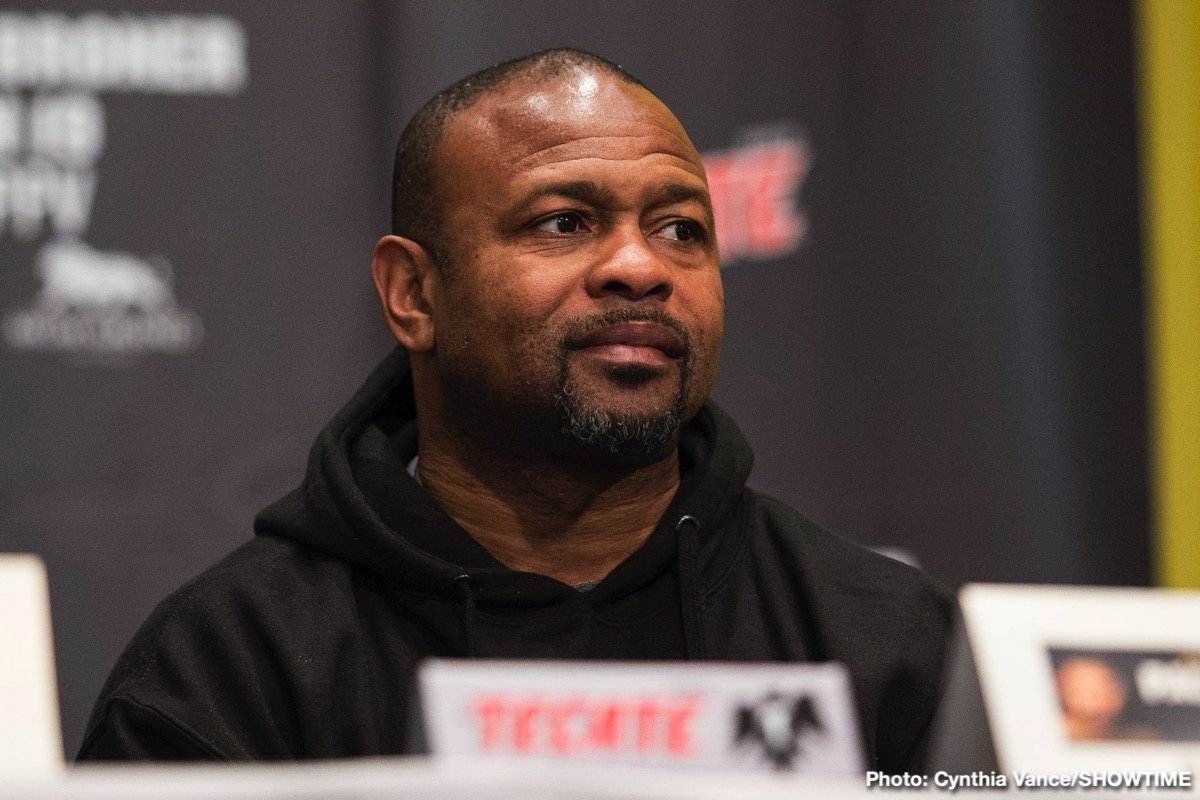By Sean Jones: Roy Jones Jr. threw away a chance to pick up a HUGE $40 million payday by rejecting an offer to fight Mike Tyson near the end of his career in 2003, according to Andre Ward.
Along with the guaranteed $40 million, Jones would have gotten a pay-per-view upside. It would have easily been the biggest payday of Jones’ career, but he opted not to take it.
Roy wanted more money, and he mistakenly believed the Tyson fight would still be there at a later date, says Ward. According to Celebrity Net Worth, Jones currently has a net worth of $10 million.
Jones Jr. (48-1) at the time, and had just beaten WBA heavyweight champion John Ruiz to become a four-division world champion.
Tyson had just lost to Lennox Lewis by an 8th round knockout in June 2002, and it was clear that he was nearing the end of his career. Mike only fought three more times before retiring in 2005 after losing consecutive fights to Kevin McBride and Danny Williams.
It goes without saying that Jones missed out on a big opportunity to not only cement his legacy with a win over Tyson, who was there for the taking but also the $40 million+ he could have made.

Ward: Jones Jr. rejected the $40M to fight Tyson
“There was a [Mike] Tyson fight on the table, and I believe I’m accurate when I say this it was somewhere around $40 million guaranteed,” said Ward to JRE Clips on Roy Jones Jr. turning down a MASSIVE offer.
“There was an upside too. You stay at heavyweight, keep the weight on, and Tyson wasn’t quite Tyson at that time.
“He was still dangerous, but he wasn’t quite Tyson. I think they were working towards it. What I heard was Roy wanted more money,” said Ward.
You can kind of understand why Jones turned down the fight with Tyson. During that point in Jones’ career, he was 48-1, making good money per fight, and he looked invincible.
He’d just moved up to heavyweight and knocked off what many saw as a paper champion in Ruiz, and the sky was the limit. Jones couldn’t foresee that his career would almost immediately go down the drain after he moved back down to 175 to defend his title against Antonio Tarver.
Jones Jr. picked Tarver over Tyson fight
What was hard to understand is WHY Jones chose to move back down to light heavyweight to defend against a fighter that wasn’t hugely popular in Tarver. The move by Jones made zero sense business-wise.
It was an odd move by Jones to turn down a fight with Tyson to take a much smaller seemingly meaningless bout with Tarver. In hindsight, it was a move that you could easily second-guess, as there was no demand from fans for Jones to fight Tarver.
Tarver was a good fighter, but he wasn’t a huge name and he fought in a division that had traditionally been ignored by the casual boxing fans. The smarter move would have been for Jones to stay put at heavyweight, and take the fight with Mike Tyson.
It’s unclear whether Jones came up with the ideal all by himself to reject the Tyson fight and move back down to 175 to face Tarver or if that was what someone told him to do. Either way, it was a wrong-headed move on Jones’ part and he missed out on a big opportunity.
Although Jones defeated Tarver by a 12 round majority decision in November 2003, the fight was close and controversial in the eyes of many boxing fans. This was not the Jones that people had seen in the past.
He looked slower, weaker and lethargic after moving back down from heavyweight to 175. Some attribute Jones’ condition to the huge amount of muscle weight that he stripped off of his physique in coming back down to light heavyweight. Six months later, Tarver shockingly stopped Jones in the 2nd round in their rematch in May 2004.

Roy Jones Jr. thought Tyson fight would still be there later
“Roy somehow said, ‘No, the fight will be there down the road,’ and put his attention to Antonio Tarver, and the rest is history,” said Ward.
“I wanted to see him fight Tyson and ride off into the sunset. One more and you’re out.
“Roy could have had a full career, and rode off into the sunset, hunting, and fishing, doing whatever he does, and still not been fundamentally sound,” said Ward on Jones turning down the payday.
Before Jones fought Ruiz, he had dominated his opposition at 175, and it looked like he was going to be able to stay on top for a long time. But when Jones returned from fighting at heavyweight, he wasn’t the same guy he’d been.
The speed and explosive power that he once had was gone. He’d deteriorated almost overnight, and Tarver took full advantage of that.
After the loss to Tarver in 2004, Jones lost his next two fights against Glen Johnson by a 9th round knockout in September 2004 and Tarver in a 12 round decision defeat in October 2005. The one good thing Jones did after his KO defeat to Johnson was for him to take a year off boxing to recover from his back to back knockout defeats.
Sadly, that didn’t fix the problem Jones had. He looked faded in losing his trilogy match to Tarver, and three years later he was badly outclassed by Joe Calzaghe in 2008 in 12 round decision loss. Calzaghe clowned Jones by standing close and daring him to throw shots. Jones could no longer pull the trigger on his punches by that point in his career.

